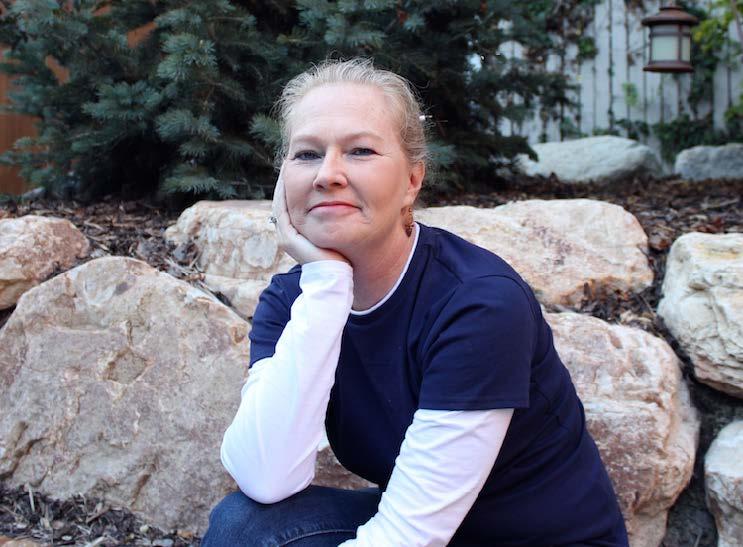A SPECIAL SECTION BROUGHT TO YOU BY THE INTERNATIONAL ASSOCIATION OF EXHIBITIONS AND EVENTS

Millennials, the generation of Americans born between 1982 and 2004, is quickly blanketing the workforce. In recent years, the event industry has placed the group under the microscope to help prepare for or even exploit its particular peccadilloes. But this discovery phase, while ongoing, is slowly winding down. Generation Y is making its presence known on trade show floors, in meeting rooms and at stand-up desks in open-floor-plan offices. As a result, event organizers and suppliers are implementing Millennial-focused programs to nurture these young professionals. It’s a tremendous opportunity and, in some cases, a matter of survival.
What Research Reveals
In its 2015 Young Professional Attendee Needs and Preferences Study, the Center for Exhibition Industry Research (CEIR) is bullish on Millennials. They value face-to-face marketing mediums “for the unique opportunities they offer to connect in a real-time, physical space with people and product.” They also like to “engage in face-to-face discussions with the people behind the products and peers and others in the industry.” At the same time, CEIR says, “young professionals are discriminating.” They're looking for entertaining and immersive experiences and don't compartmentalize work and play. Plus, while “content remains consistent with the needs of young professionals,” Millennials want to participate in their own learning.
According to When Millennials Take Over: Preparing for the Ridiculously Optimistic Future of Business by Jamie Notter and Maddie Grant, Millennials are people forged by this moment in history. Growing up with the social internet compels them to circumvent bureaucracy and hierarchy. As products of great material abundance, “Millennials are showing up with higher standards and greater expectations.” Emerging from a more culturally diverse population makes them “ready to color outside the lines.” And because their parents have coveted them, Millennials blur “some of the traditional boundaries between themselves and authority figures,” the authors write.

Nurturing Careers and Reducing Risk
The International Sign Association (ISA) is entering its fourth year of a program called ISA Elite, in which 35 association members born after 1982 gather at the ISA International Sign Expo. Participants are invited to meet with board members, staff and alumni, as well as attend the trade show and education sessions. Later in the year, during a two-day retreat that coincides with the ISA board meeting, they receive leadership training. The objective of ISA Elite is to “foster a ‘family’ of industry professionals who are passionate about what they do and who form a community who can share resources and drive the industry forward,” says Iain Mackenzie, vice president, meetings and events at ISA.
There are other reasons why ISA is investing in Millennials. Workforce development is an ongoing challenge. “People don’t know the sign industry exists. It’s hard to attract people to work in it and companies are struggling to find workers,” Mackenzie explains. ISA Elite is also a self-preservation initiative. It helps young professionals understand what ISA does and motivates them to attend the exhibition. It also mitigates “the fear, whether it’s a cliché or not, that this generation is going after computer games and texting and doesn't want face-to-face interaction,” he adds. Mackenzie hopes that the program builds peer-to-peer advocacy to keep the event (a revenue generator) and the association thriving.
ISA has learned a lot about its “elites.” By polling them last year about what keeps them up at night, the group knows that their top concern is time management and work/life balance. But they’re also interested in finding and keeping employees (some are already managers), becoming better leaders, building teams and advancing their careers. Some are curious about the technology changes in the industry. “We have found our groups definitely want [the program] to be very participatory and engaging. Lecture style does not appeal to them. They love small groups and every year the parts they have loved the best are the small group chats with the board members,” Mackenzie says.
Adding Some Sass to the Event Experience
The National Association of Neonatal Nurses (NANN) is actively engaged in outreach to Millennial attendees. “In the last couple years, we’ve really done a great job of retooling our conference to engage more Millennials and entice them to attend,” says Brendan Sugrue, marketing and membership coordinator at NANN. The group started by communicating the benefits of attendance in ways that appeal to Generation Y. For example, conference messaging focuses on career growth, meeting and making friends (a.k.a. networking), mentoring, destination-based activities before and after the conference—what attendees will fail to experience if they don’t attend (Millennials have a fear of missing out, Sugrue says)—and fun.
NANN’s Millennial staff works overtime thinking of ways to help, surprise and delight its young counterpart professionals. To allay the fears of new attendees, it developed a buddy program that pairs them with conference veterans to learn the “lay of the land.” It also hosts a first-timers reception so newbies can meet other newbies. In the past, they’ve created a Bling Your Badge station where attendees can bedazzle their own nametags and arranged Bloom For Your Room, a chance (at check-in) for attendees to make a bouquet of fresh flowers to take to their hotel rooms.
Two years ago, the group introduced NANN After Dark, a dance party with appetizers, drinks and a DJ. It remains one of the most popular activities of the conference, Sugrue says. To thank its expanding base of social media fans last year, it rolled out a “social media popup surprise.” Once a day, staffers set up a roving booth in the expo hall and provided clues (via social media only) on what the surprise would be and where it would be located. Followers were treated to apple cider one day and grilled pizza the next, both from Providence, R.I. (last year’s conference location). Sunglasses (to showcase next year’s destination, Anaheim, Calif.) awaited clue seekers the third day.

Ready, Set, Letting Young Professionals Go
Five years ago, Sierra Grimes, now manager, registration, conventions and membership of the National Business Aviation Association (NBAA), went to her boss with an idea. As a Millennial, she sought to develop an industry-wide Young Professionals (YoPro) program to help build relationships with other Millennials. She pulled together a cross-functional group of peers and organized a meetup at the association’s massive annual conference. Grimes and colleagues repeated their efforts at a European conference and the initiative snowballed from there. They now have education, a formal peer-to-peer network, access to mentors and “a voice and a way to bridge the gap between generations,” Grimes says.
The boss, Chris Strong, currently senior vice president, conventions and membership at NBAA, was supportive then and is even more enthusiastic now. Not only has Grimes’ idea impacted the industry, which (like others) is maturing and confronting workforce challenges, it has strengthened the association and its events. He cites several benefits that come to NBAA from YoPro: personalized conferences that attract Gen Y attendees, sponsors interested in cultivating Millennial buyers, retention of employees that the association would otherwise lose and a pathway to fostering interest in jobs (pilots and mechanics) for which there are mounting industry shortages.
Strong determined early on that the best tack to take with YoPro was to “provide support to this energized group of folks and then get out of the way,” he says. Consequently, Grimes and her colleagues have put their own stamp on the program. “Mentorship is a big thing,” she says. So, the group is hard at work exploring the possibility of an industry-wide mentorship program, but they’ll likely put a different twist on it. Millennials want to know how leaders “got to where they are, but not necessarily in the same time frame,” she explains. They want to amp up the activities that speak to their values like giving back to the communities where NBAA holds events and giving the next generation (Z) a hand up.
Helping Clients Connect and Build Community
While many Millennials are building programs to benefit their fellow employees and event stakeholders, the Association Management Center (AMC) is also developing programming for its client base—small associations. The firm’s Young Professionals special interest group (SIG) has an official charter “to create a greater sense of community among new/young colleagues within AMC, explore opportunities for professional development and provide a forum for networking within the industry.” But for one of the women coordinating the SIG, “It’s the place to ask the questions I was too terrified to ask when I was 22,” says Andrea King, account manager at AMC.
AMC’s Young Professionals SIG hosts three types of events: educational (to meet the professional development requirement), social (to build community) and a hybrid of both. And even though the group organizes the occasional barbeque, happy hour or Mingle with the Engles (the firm’s three principals), “the most popular activities are educational,” explains Val Good-Turney, operations coordinator at AMC. She has helped facilitate presentations on how to talk about value as a growing professional, personal finance, speed mentoring, volunteerism, self-care, managing up, career paths and multi-generational leadership.
AMC measures its success with the Young Professionals SIG in many ways, including feedback from an annual survey of SIG members. King and Good-Turney also look at attendance at the programs, as well as growth in overall program participation. Candid feedback isn’t that hard to come by either. “Millennials will just tell us, ‘I came for the food or that was really great,’” Good-Turney says. As Millennials, the two also judge their efforts based on what has worked for them. “Success for me is measured by whether we know more people and whether we are creating a community. It’s been very rewarding for me,” King explains.
Treating Millennials as Peers and Professionals
Event-industry marketing firm Marketing Design Group (MDG) devises programs and incentives to retain Millennial talent—an increasing challenge in an upbeat economy and tight labor market. Allison Vassallo, human resources manager at MDG, explains the firm’s position on Millennial staff. “We are steadfast in the belief that Millennials are adults who have the same potential to contribute as any other generation of employee. This belief allows us to trust Millennials and provide them opportunities to showcase their potential.” With age not a factor in determining an employee’s level of responsibility or potential, MDG has promoted Millennial standouts based on performance, passion for the events business and vision.
MDG also works to align its programming with Millennial preferences and desires. For example, it helps them find purpose and give back through initiatives such as Random Acts of Kindness—a 30-day celebration of doing good. The company reimburses employees for purchases they make during Small Business Saturday, a post-Thanksgiving campaign to support local business. “Rather than dictating that all participate, or giving strict parameters, both of these initiatives are invitations to action and allow employees to choose how to participate in a way that they find meaningful,” Vassallo says. Plus, MDG’s sabbatical program gives employees an extra week of paid time off and a travel reimbursement once every three years.
MDG recognizes that “being given a voice and a choice” is important to Millennials, Vassallo says. So, it encourages young professionals to weigh in, for example, on new technologies and social media platforms and invites them to participate in beta testing new resources. Taking a one-size-fits-all approach to career development doesn’t work very well for Millennials, Vassallo says. Thus, the company offers “career journey mapping” to employees. The program allows them to actively chart their own course, including setting goals and selecting professional development resources that align with those objectives.
Notter and Grant maintain, “management is changing profoundly and permanently” because of three trends: the decline of traditional management, the social internet revolution and the Millennial generation entering the workforce. It creates a perfect storm, they write. Nevertheless, they are, as the title of their book asserts, ridiculously optimistic. The event industry seems to be in agreement.



